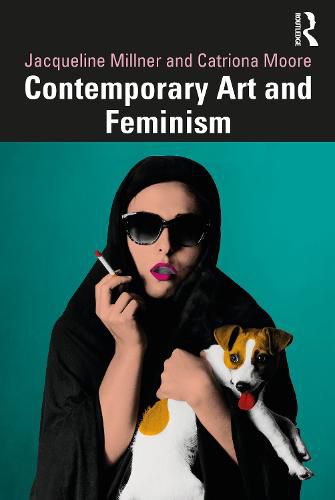Readings Newsletter
Become a Readings Member to make your shopping experience even easier.
Sign in or sign up for free!
You’re not far away from qualifying for FREE standard shipping within Australia
You’ve qualified for FREE standard shipping within Australia
The cart is loading…






This important new book examines contemporary art while foregrounding the key role feminism has played in enabling current modes of artmaking, spectatorship and theoretical discourse.
Contemporary Art and Feminism carefully outlines the links between feminist theory and practice of the past four decades of contemporary art and offers a radical re-reading of the contemporary movement. Rather than focus on filling in the gaps of accepted histories by ‘adding’ the ‘missing’ female, queer, First Nations and women artists of colour, the authors seek to revise broader understandings of contemporary practice by providing case studies contextualised in a robust art historical and theoretical basis. Readers are encouraged to see where art ideas come from and evaluate past and present art strategies. What strategies, materials or tropes are less relevant in today’s networked, event-driven art economies? What strategies and themes should we keep hold of, or develop in new ways?
This is a significant and innovative intervention that is ideal for students in courses on contemporary art within fine arts, visual studies, history of art, gender studies and queer studies.
$9.00 standard shipping within Australia
FREE standard shipping within Australia for orders over $100.00
Express & International shipping calculated at checkout
This important new book examines contemporary art while foregrounding the key role feminism has played in enabling current modes of artmaking, spectatorship and theoretical discourse.
Contemporary Art and Feminism carefully outlines the links between feminist theory and practice of the past four decades of contemporary art and offers a radical re-reading of the contemporary movement. Rather than focus on filling in the gaps of accepted histories by ‘adding’ the ‘missing’ female, queer, First Nations and women artists of colour, the authors seek to revise broader understandings of contemporary practice by providing case studies contextualised in a robust art historical and theoretical basis. Readers are encouraged to see where art ideas come from and evaluate past and present art strategies. What strategies, materials or tropes are less relevant in today’s networked, event-driven art economies? What strategies and themes should we keep hold of, or develop in new ways?
This is a significant and innovative intervention that is ideal for students in courses on contemporary art within fine arts, visual studies, history of art, gender studies and queer studies.